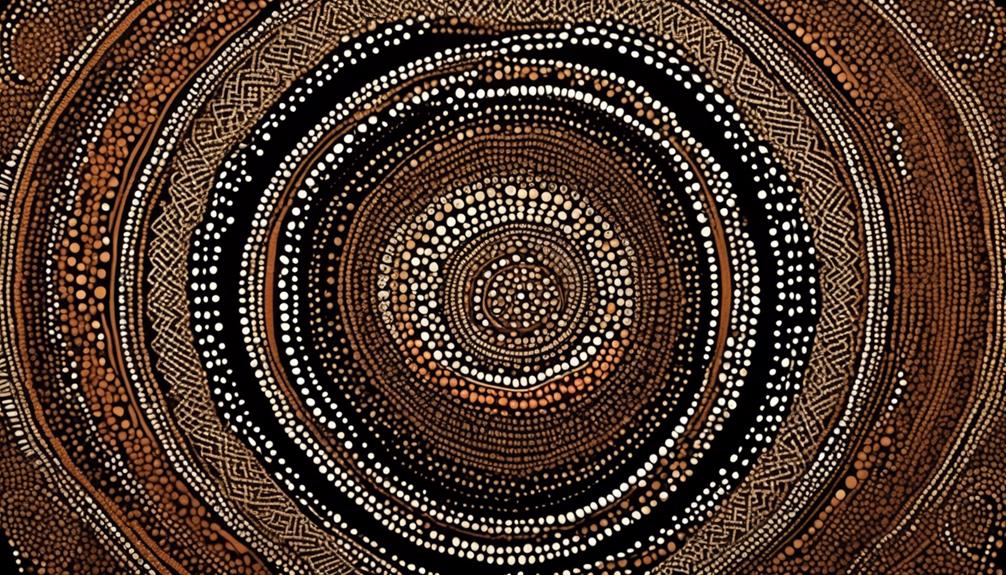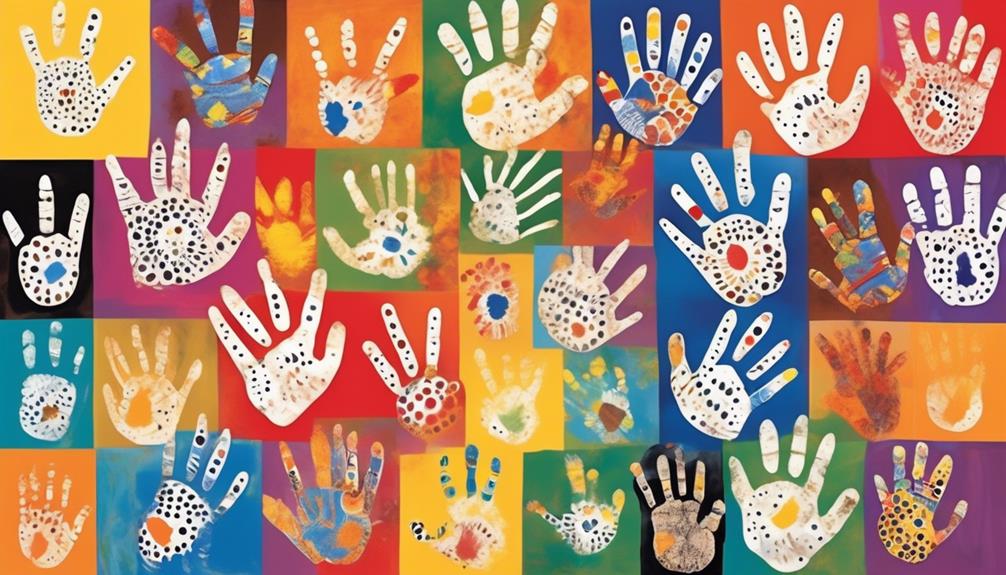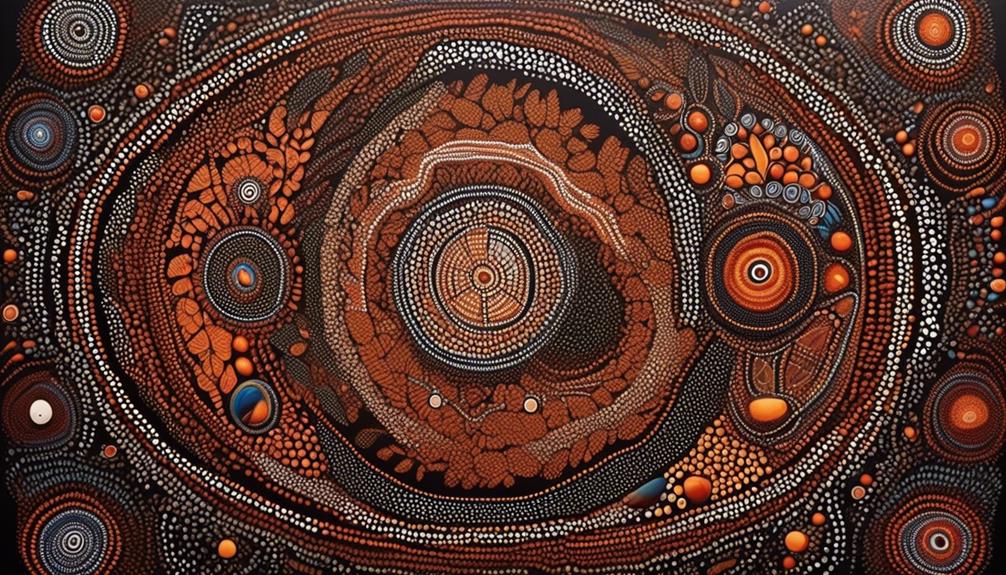Boomerangs have fascinated people around the world for centuries. The classic image of a boomerang gracefully arcing through the air and returning to the hands of its thrower is a familiar sight. But have you ever stopped to consider the historical and cultural significance of these unique objects?
There's much more to boomerangs than meets the eye, and understanding their origins and uses can provide a deeper appreciation for their role in various societies.
Key Takeaways
- Boomerangs have ancient origins dating back over 20,000 years and were invented by Indigenous Australians.
- Boomerangs hold cultural and practical value, being used for hunting, ceremonial rituals, and survival in the Australian outback.
- Boomerangs come in various types and materials, including returning boomerangs, hunting boomerangs, cross-stick boomerangs, throwsticks, and decorative boomerangs.
- Boomerang throwing techniques involve understanding aerodynamics, physics, and customization of design, and they are also used in sporting competitions and modern recreational activities.
Origins of Boomerangs
Where did the concept of boomerangs originate, and how have they played a role in various cultures throughout history?
Boomerangs have ancient origins, with the earliest evidence of their use dating back over 20,000 years. Indigenous Australians are widely recognized as the primary inventors of this iconic tool. The boomerang held significant cultural and practical value for these communities, often used for hunting and in ceremonial rituals. Its unique aerodynamic properties made it an essential tool for survival in the harsh Australian outback. The traditional craftsmanship of boomerangs involved careful selection of wood, precise shaping, and intricate designs that held symbolic meanings within the culture.
Beyond Australia, boomerang-like objects have been found in other parts of the world, including ancient Egypt, Poland, and the United States. These discoveries suggest that similar aerodynamic principles were independently recognized in various cultures. The diverse uses of boomerangs reflect the adaptability and ingenuity of different societies. From hunting and warfare to recreational activities and artistic expression, boomerangs have played multifaceted roles in shaping cultural identities.
The ancient origins and traditional craftsmanship of boomerangs offer a fascinating insight into the technological prowess and cultural significance of early civilizations. Understanding the historical context of boomerangs enriches our appreciation of these objects beyond their popular perception as recreational toys. The enduring legacy of boomerangs serves as a testament to the creativity and resourcefulness of human innovation throughout the ages.
Types of Boomerangs
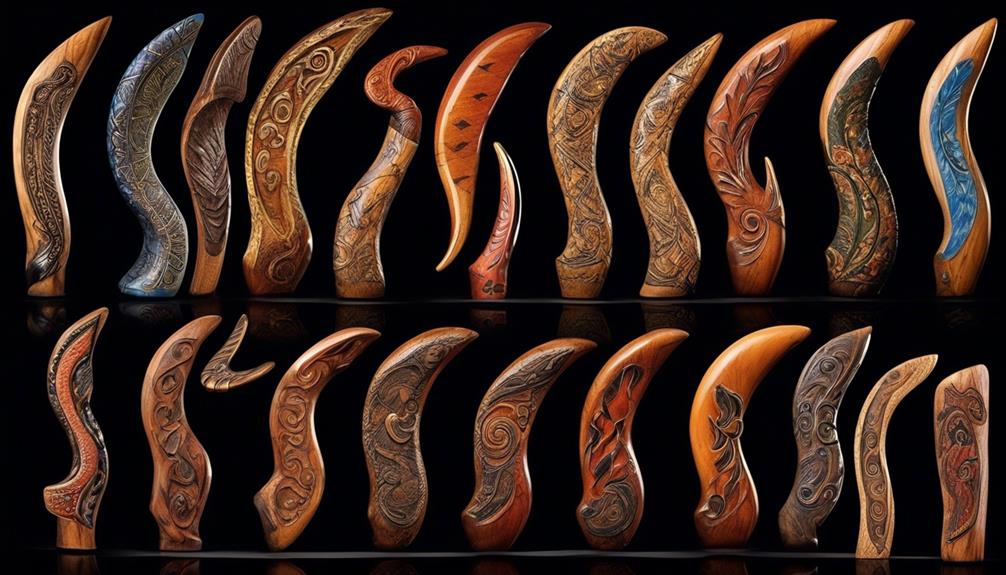
Boomerangs come in various types, each designed to serve specific purposes and exhibit unique aerodynamic characteristics. These types are a testament to the rich cultural and historical significance of boomerangs across different societies. Let's explore the diverse array of boomerangs and their fascinating attributes:
- Returning Boomerangs: These are the most common type, designed to return to the thrower. Their unique shape and airfoil design enable them to generate lift, allowing them to complete a circular flight path.
- Hunting Boomerangs: Crafted for accuracy and distance, these boomerangs were historically used for hunting game. They're specially shaped to travel in a straight line, covering extensive distances to reach their target.
- Cross-Stick Boomerangs: Characterized by their distinctive 'Y' shape, these boomerangs have two arms forming a cross. They're known for their stability and often used in ceremonies or artistic displays.
- Throwsticks: While not strictly boomerangs, throwsticks are an important part of Aboriginal hunting traditions. They're straight, non-returning projectiles used for hunting and warfare.
- Decorative Boomerangs: These boomerangs are often ornately decorated and serve ceremonial or artistic purposes. They aren't designed for practical use but hold significant cultural value.
Understanding the distinct characteristics and purposes of these boomerang types provides insight into the intricate world of boomerang throwing techniques and the fascinating aerodynamics and physics behind their flight.
Boomerang Materials
Crafted from a diverse range of materials, boomerangs showcase the ingenuity and resourcefulness of traditional artisans across different cultures.
Wooden boomerangs, historically significant for their use in indigenous traditions, reflect a deep connection to nature and the environment. The use of wood in crafting boomerangs not only underscores the practicality of utilizing locally available resources but also symbolizes a profound cultural reverence for the natural world. The historical materials used in boomerang construction, such as native hardwoods, highlight the deep-rooted traditions and ancestral knowledge passed down through generations.
In contrast to the traditional wooden boomerangs, modern materials like plastic have also made their way into boomerang production. Plastic boomerangs, while deviating from historical practices, have brought about changes in the design and aerodynamics of these objects. The incorporation of modern materials has allowed for greater experimentation and innovation, leading to the development of boomerangs with enhanced performance and durability.
The cultural impact of boomerang materials is significant, as it reflects the adaptation and evolution of indigenous practices in a contemporary context. While traditional wooden boomerangs maintain their cultural significance, the introduction of modern materials has expanded the possibilities for boomerang design and functionality. This intersection of historical and modern materials in boomerang construction illustrates the resilience and adaptability of cultural traditions in the face of changing technological landscapes.
Traditional Uses
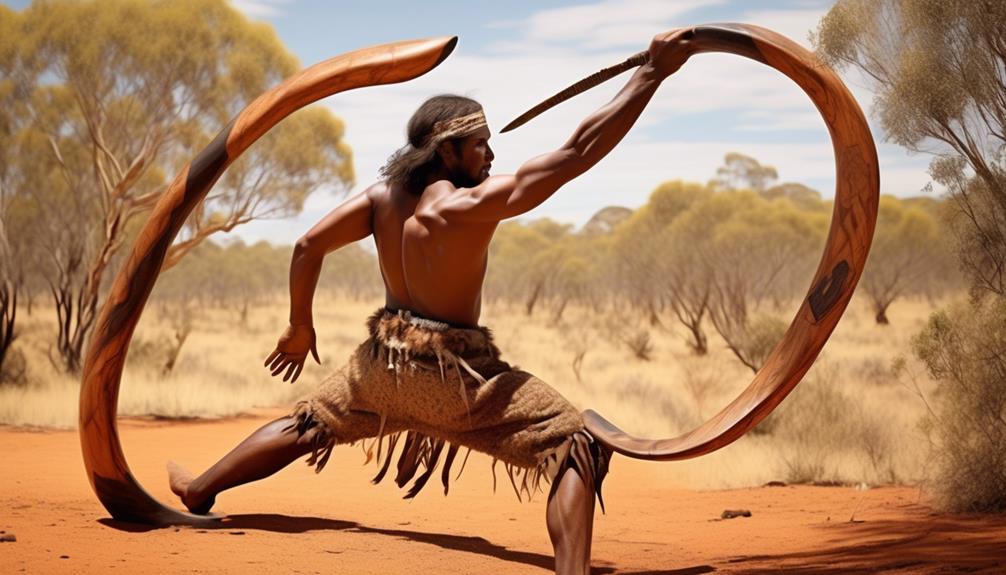
Traditional boomerangs have served a multitude of purposes for indigenous communities, including as a hunting tool, a symbol in cultural ceremonies, and a key element in sporting competitions.
Their significance in these various contexts provides insight into the rich cultural heritage of the communities that have utilized them for generations.
These traditional uses offer a window into the practical, spiritual, and recreational aspects of boomerangs within indigenous societies, highlighting the multifaceted nature of these iconic objects.
Hunting Tool
Used by indigenous peoples for generations, boomerangs served as an essential tool for hunting and survival in various regions around the world. Crafted with precision and skill, boomerangs were designed to exhibit intricate aerodynamics, enabling them to return to the thrower if the hunt was unsuccessful.
The boomerang construction varied across different cultures, with each community infusing unique cultural elements into the crafting process. When thrown with accuracy and force, the boomerang would soar through the air, creating a whistling sound that echoed through the hunting grounds. It would gracefully curve and spin, honed by the precise angles and contours of its shape.
As it sliced through the air, it became a symbol of the deep connection between indigenous communities and the natural world, embodying their resourcefulness and harmonious coexistence with nature.
Cultural Ceremonies
Boomerangs, having been pivotal in the hunting practices of indigenous communities, also hold significant cultural importance in traditional ceremonies.
In many Aboriginal cultures, boomerangs are intricately woven into their cultural traditions and symbolic meaning. During ceremonies, boomerangs are often used to symbolize the interconnectedness of all living things and the cyclical nature of life. They're sometimes painted with intricate designs that hold deep spiritual significance, representing the stories and beliefs passed down through generations.
The act of throwing and catching a boomerang in ceremonies is a powerful expression of ancestral knowledge and connection to the land. The boomerang's return to the thrower is seen as a reflection of the ongoing relationship between the people and the natural world, making it a central element in traditional ceremonies.
Sporting Competitions
Embedded in the cultural fabric of indigenous communities, boomerangs have been employed in sporting competitions as a means of showcasing skill, precision, and ancestral traditions. Boomerang throwing requires a deep understanding of aerodynamics and the unique properties of each boomerang.
In competitive settings, participants demonstrate their mastery by launching the boomerang with precision, aiming to achieve the furthest distance or the most accurate return. Boomerang competitions often serve as platforms for connecting younger generations with their heritage, fostering a sense of pride and belonging.
The rhythmic sound of the boomerang slicing through the air creates an atmosphere filled with anticipation and excitement. Spectators cheer as the boomerang soars gracefully before making its triumphant return, evoking a profound sense of cultural significance and celebration.
Boomerang Shapes
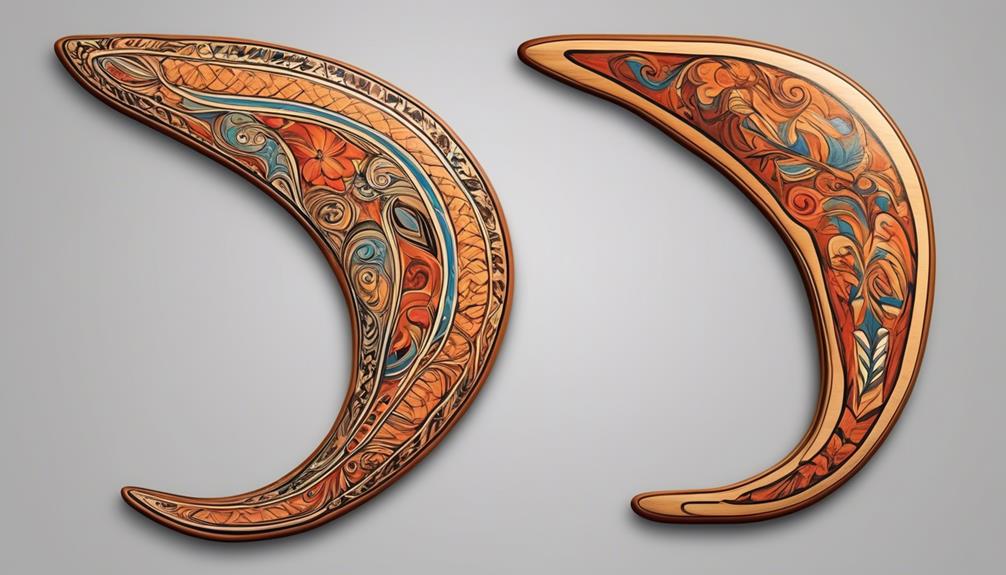
When it comes to boomerangs, the shapes play a crucial role in their functionality and performance.
Traditional boomerang shapes, such as the classic 'L' or 'V' designs, have been used for centuries by indigenous peoples for hunting and ceremonial purposes.
In contrast, modern boomerang designs often incorporate aerodynamic principles to achieve more precise flight paths and longer ranges.
Traditional Boomerang Shapes
Crafted by skilled artisans with centuries of knowledge and expertise, traditional boomerangs come in a variety of distinctive shapes, each designed with specific aerodynamic properties. These shapes include:
- L-shaped boomerangs: These boomerangs have a straight leading arm with a slight bend at the elbow, resembling the letter 'L'.
- V-shaped boomerangs: Featuring a v-shaped design, these boomerangs are known for their stability and precise flight paths.
- Cross boomerangs: These boomerangs have a cross-like shape, with four arms extending from the center, providing unique flight patterns.
- Hook boomerangs: Characterized by a curved shape resembling a hook, these boomerangs offer exceptional accuracy and distance.
- Bird-shaped boomerangs: Mimicking the silhouette of a bird in flight, these boomerangs are revered for their graceful and smooth trajectories.
Each of these traditional shapes reflects the rich cultural heritage and deep understanding of aerodynamics in boomerang crafting and throwing techniques.
Modern Boomerang Designs
The evolution of traditional boomerang shapes has paved the way for diverse and innovative modern boomerang designs, reflecting advancements in aerodynamics and cultural adaptations. Boomerang innovation has led to a wide range of shapes, each designed for specific flight characteristics and purposes. In boomerang competitions, these modern designs showcase the fusion of tradition and innovation, with competitors using boomerangs that vary in shape, size, and weight to achieve different flight patterns and distances. Some modern boomerangs have elaborate wing shapes, such as the X-shaped boomerang, designed to maximize lift and stability. Others, like the hook boomerang, are engineered for long-distance flights. These designs not only demonstrate technological progress but also honor the rich cultural heritage of boomerang throwing.
| Boomerang Shape | Flight Characteristics |
|---|---|
| X-shaped | Maximum lift and stability |
| Hook | Long-distance flights |
| Tri-blade | Precision and accuracy |
| Winged | Circular flight patterns |
| V-shaped | Fast and agile flights |
Aerodynamics of Boomerangs
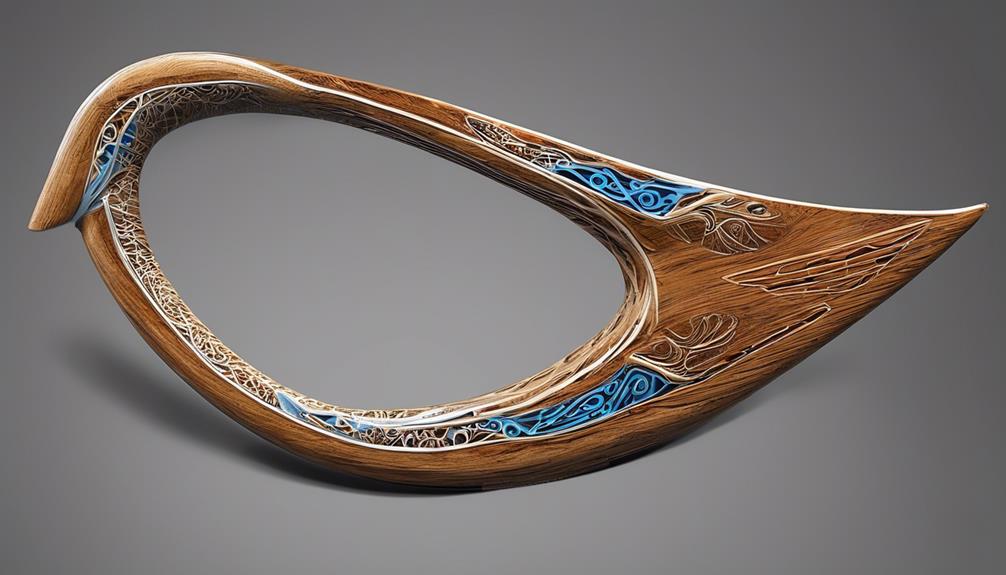
Boomerangs demonstrate a unique and complex aerodynamic behavior that distinguishes them from other flying objects. When thrown correctly, a boomerang's flight showcases the intricate interplay of aerodynamic principles, resulting in its characteristic curved path and return to the thrower. The aerodynamics of boomerangs are a fascinating fusion of art and science, deeply rooted in cultural traditions and practical functionality.
- Airfoil Design: The asymmetrical airfoil design of boomerangs creates varying lift forces on the upper and lower surfaces, allowing for stable flight and return.
- Spin: The rotational spin imparted on the boomerang as it's thrown contributes to gyroscopic stability, aiding in its ability to maintain a consistent flight path.
- Angle of Attack: The angle at which the boomerang is thrown and its subsequent angle of attack influence its trajectory, with skilled throwers adjusting these parameters to control the boomerang's flight.
- Weight Distribution: The distribution of weight throughout the boomerang influences its stability and the tightness of its turning radius during flight.
- Atmospheric Conditions: The interaction of the boomerang with air currents and wind direction significantly impacts its flight behavior, requiring throwers to adapt their techniques accordingly.
The aerodynamics of boomerangs reflect the deep connection between culture, history, and scientific principles. Understanding and appreciating these aerodynamic intricacies adds a layer of richness to the art and sport of boomerang throwing, embodying the spirit of liberation through the pursuit of knowledge and mastery.
Throwing Techniques

Exploring the art of boomerang throwing involves mastering the intricate techniques required to harness the aerodynamic principles previously discussed. When it comes to throwing a boomerang, understanding the physics behind its flight path and trajectory is crucial. The angle at which the boomerang is held and the force exerted while throwing directly impact its trajectory. A slight tilt or a variation in force can result in significant deviations in the boomerang's flight path, making it essential to practice and perfect the throwing technique.
Furthermore, boomerang design and customization play a pivotal role in the throwing technique. The shape, weight distribution, and airfoil design of the boomerang influence how it should be thrown. For instance, a larger, heavier boomerang requires more force and a different throwing technique compared to a smaller, lighter one. Additionally, the design of the wings and the overall shape of the boomerang affect how it responds to the air, demanding adjustments in the throwing technique to achieve the desired flight pattern.
Understanding the interplay between boomerang physics and design is fundamental to mastering the art of boomerang throwing. It isn't merely about hurling a curved piece of wood into the air; it's about comprehending the intricate dynamics at play and adapting one's technique to achieve the desired result.
Ultimately, the mastery of boomerang throwing techniques opens the door to a captivating and liberating cultural experience.
Boomerang Hunting
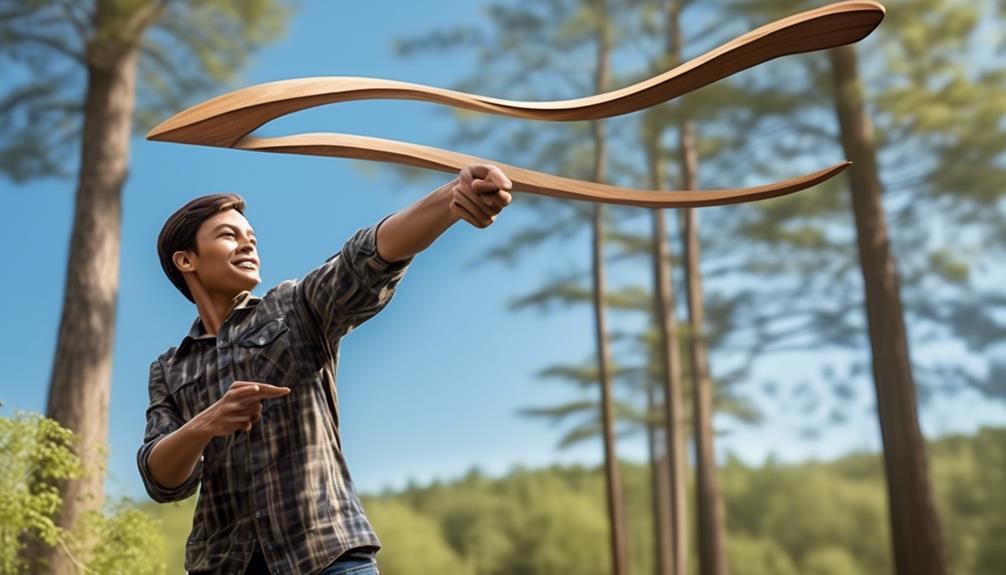
Honing our skills in boomerang hunting requires a deep understanding of the land, wind patterns, and the elusive prey that we seek to encounter. As we venture into the wilderness, our senses are heightened, attuned to the subtle shifts in the environment. Our journey begins with the crafting of the boomerang itself, a process steeped in tradition and reverence for the natural materials we use. Each boomerang is meticulously carved and shaped, with a keen eye for balance and aerodynamics, ensuring its flight is true and precise.
The hunt commences with a careful study of the land, observing the natural corridors and hiding spots where our prey may take refuge. We analyze the wind patterns, feeling the subtle changes in air currents that could influence the trajectory of our boomerangs. Our traditional hunting techniques are a testament to the deep connection we've with nature, moving with stealth and patience as we track our quarry.
The boomerang becomes an extension of ourselves, a tool that harmonizes with our movements and instincts, enhancing our chances of a successful hunt. As we close in on our target, the moment of truth arrives, and with a swift and practiced throw, the boomerang arcs through the air, guided by centuries of knowledge and skill.
Each hunt isn't just a pursuit of sustenance but a cultural expression, a dance between human ingenuity and the untamed spirit of the wild.
Boomerangs in Art
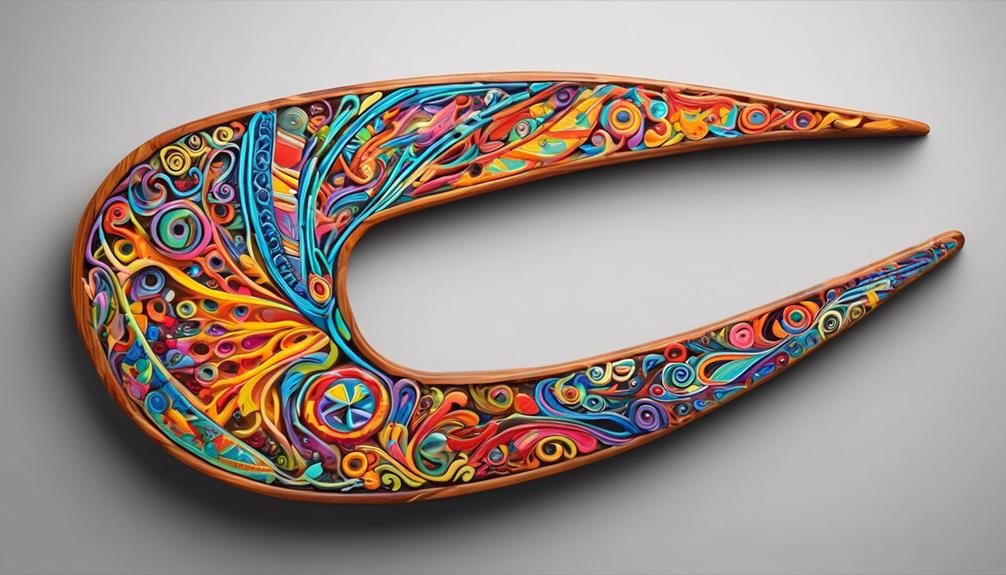
As our understanding of boomerangs deepens, their influence extends beyond hunting, weaving into the fabric of artistic expression and cultural significance. Boomerangs have become a captivating symbol in the world of art, representing not only their traditional roots but also modern interpretations. In fashion, boomerang motifs are often used to create striking and bold designs, symbolizing movement and the interconnectedness of cultures. The iconic shape of a boomerang has been incorporated into various clothing items, from dresses to accessories, adding a touch of dynamism and cultural appreciation to the fashion industry.
Furthermore, boomerangs have made their mark in advertising, where their unique form and historical significance are utilized to convey messages of return, connection, and reliability. Advertisements often use the boomerang as a metaphor for products or services that consistently deliver and come back to the consumer, creating a sense of trust and dependability.
| Boomerangs in Fashion | Boomerangs in Advertising |
|---|---|
| – Symbolize movement and cultural interconnectedness in designs | – Metaphor for return, connection, and reliability in advertisements |
| – Add dynamism and cultural appreciation to clothing items | – Convey messages of trust and dependability |
The integration of boomerangs into art, fashion, and advertising reflects a broader cultural shift towards embracing diverse and meaningful symbols. These creative expressions serve to honor the boomerang's heritage while also adapting it to contemporary contexts, bridging the past and the present in a visually compelling manner.
Boomerang Collecting
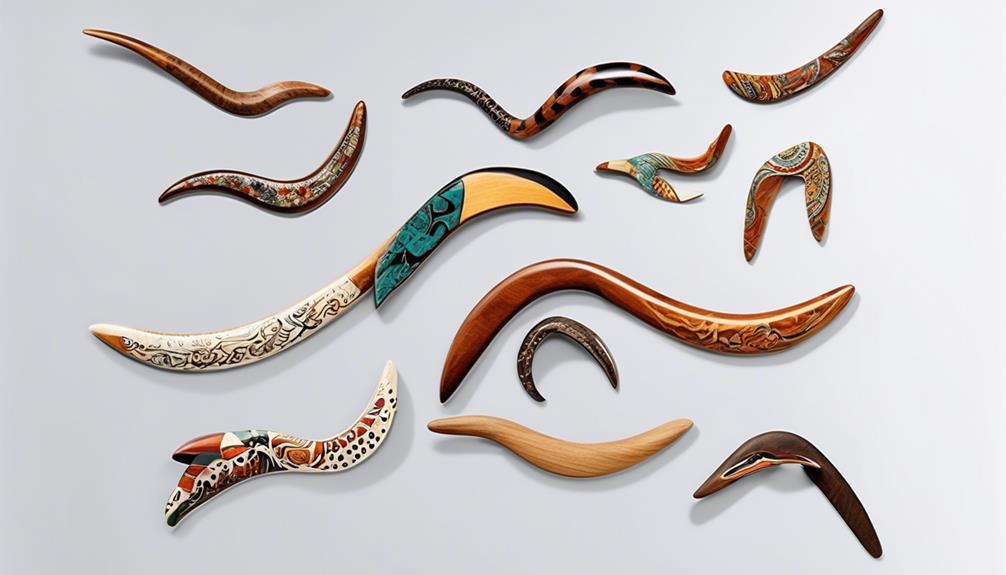
As collectors of boomerangs, we're constantly on the lookout for rare finds that hold historical significance. The thrill of discovering a boomerang that carries with it a piece of the past is unparalleled.
These treasures not only enrich our collections but also offer valuable insights into the cultural and technological heritage of different indigenous communities.
Rare Boomerang Finds
Rare boomerang finds offer a fascinating glimpse into the diversity and artistry of boomerang crafting across different cultures and time periods. These rare artifacts not only hold historical significance but also showcase the intricate designs and craftsmanship of ancient civilizations. When examining these exceptional boomerangs, one can't help but be captivated by their cultural symbolism and functionality.
Here are some extraordinary rare boomerang finds:
- A beautifully carved returning boomerang from the Aboriginal people of Australia, showcasing intricate dot paintings.
- A rare ceremonial boomerang from the Aztecs, adorned with intricate carvings depicting their deities and symbols of power.
- An ancient Egyptian hunting boomerang, featuring hieroglyphic engravings depicting scenes of hunting and daily life.
- A Maori war boomerang from New Zealand, with elaborate carvings representing their tribal heritage and battles.
- A rare Inuit throwing stick from Alaska, showcasing intricate carvings of arctic wildlife and hunting scenes.
These exceptional finds provide valuable insights into the cultural and historical significance of boomerangs across different civilizations.
Historical Significance
Exploring the significance of boomerang collecting unveils a rich tapestry of cultural heritage and historical narratives embedded within these unique artifacts. Boomerangs hold deep historical origins, serving as more than just hunting tools. They have been integral to indigenous Australian cultures for thousands of years, playing a significant role in rituals and ceremonies. Boomerang collecting not only preserves these historical origins but also sheds light on the diverse cultural practices and beliefs of different indigenous communities. The significance of boomerangs in rituals reflects the spiritual and practical importance these objects held in ancient societies. Below is a table showcasing the historical significance of boomerang collecting in different indigenous cultures:
| Indigenous Culture | Historical Origins |
|---|---|
| Aboriginal Australians | Boomerangs used in rituals and ceremonies |
| Native American | Boomerangs as symbols of spiritual power |
| African Tribes | Boomerangs used in traditional healing |
| Pacific Islanders | Boomerangs as tools for storytelling |
| Inuit People | Boomerangs as hunting and survival tools |
Modern Boomerang Sports

Modern boomerang sports have evolved from traditional hunting tools to include various competitive events and activities. These sports showcase the versatility and skill required to master the art of boomerang throwing. Here are five exciting aspects of modern boomerang sports:
- Boomerang Competitions: These events bring together boomerang enthusiasts from around the world to showcase their throwing skills in various disciplines such as distance, accuracy, and trick catch. The competitive spirit and camaraderie among participants make these competitions thrilling to watch and participate in.
- Boomerang Trick Shots: Athletes demonstrate their precision and creativity by performing intricate trick shots with boomerangs. From impressive mid-air catches to complex throw-and-catch routines, these trick shots highlight the dexterity and control required to manipulate a boomerang.
- Cultural Significance: Modern boomerang sports not only showcase athletic prowess but also celebrate the cultural heritage of boomerangs. These sports serve as a platform to educate and promote appreciation for the historical significance of boomerangs in indigenous cultures.
- Innovation in Design: The evolution of boomerang sports has led to the development of specialized boomerang designs tailored for different competitions. The innovation in materials and shapes has enhanced performance and added a new dimension to the sport.
- Community Engagement: Boomerang sports foster a sense of community and inclusivity, bringing people together to share their passion for this ancient tool. Whether as competitors or spectators, individuals from diverse backgrounds come together to enjoy the excitement of modern boomerang sports.
Boomerangs in Popular Culture

Boomerangs have ingrained themselves into popular culture, appearing in various forms of media, art, and entertainment. In movies, boomerangs have been depicted as weapons with unique abilities. One of the most iconic appearances of a boomerang in film is in the Batman franchise, as the signature weapon of the superhero, the Batarang. This portrayal has embedded the boomerang as a symbol of power and precision in the minds of audiences.
Furthermore, boomerang symbolism in literature has often been used to represent the idea of returning or coming back. This theme is prevalent in myths and folklore, where the boomerang is seen as a metaphor for the cyclical nature of life, death, and rebirth. In modern literature, the boomerang is sometimes used as a symbol of nostalgia, representing the longing for the past or the return to one's roots.
In addition to its presence in movies and literature, boomerangs have also become a popular motif in art and design. The distinctive shape of the boomerang has been utilized in various forms of artistic expression, from paintings and sculptures to fashion and interior decor. Its elegant curves and aerodynamic form have inspired artists and designers to incorporate boomerangs into their works, adding a touch of cultural significance to their creations.
Boomerang Construction
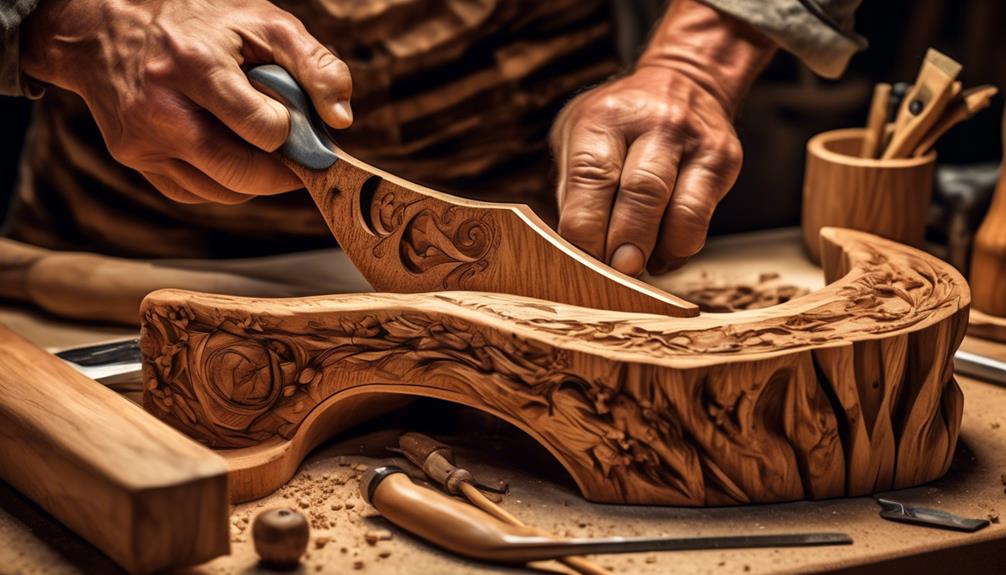
Crafting a boomerang requires a deep understanding of wood selection, shaping techniques, and aerodynamics to achieve the perfect balance and flight characteristics. Boomerang craftsmanship often involves using traditional techniques passed down through generations.
Skilled artisans carefully select wood, typically from trees like mulga or birch, known for their strength and flexibility. The wood is then meticulously shaped, often by hand, to create the iconic boomerang form. This process requires precision and patience, as the curvature and weight distribution significantly impact the boomerang's flight path.
The next step involves intricately carving the boomerang to enhance its aerodynamic properties. Artisans skillfully shape the wings and carefully adjust the angle of the leading edges to control the airflow and maximize lift. This attention to detail ensures that the boomerang returns to the thrower with precision and speed, as well as the characteristic humming sound that has captivated enthusiasts for centuries.
Additionally, traditional techniques are employed to decorate the boomerang, often with vibrant indigenous designs that reflect the cultural heritage of the craftsperson. These designs not only add aesthetic appeal but also serve as a tribute to the rich history and cultural significance of boomerangs.
Boomerang throwing, on the other hand, involves competitive techniques that demand a deep understanding of physics and aerodynamics. Skilled throwers master the art of adjusting the throw angle, tilt, and force to achieve the desired flight path and ensure the boomerang returns accurately. This intricate interplay between craftsmanship and competitive techniques underscores the enduring allure of boomerangs.
Boomerangs and Indigenous Cultures
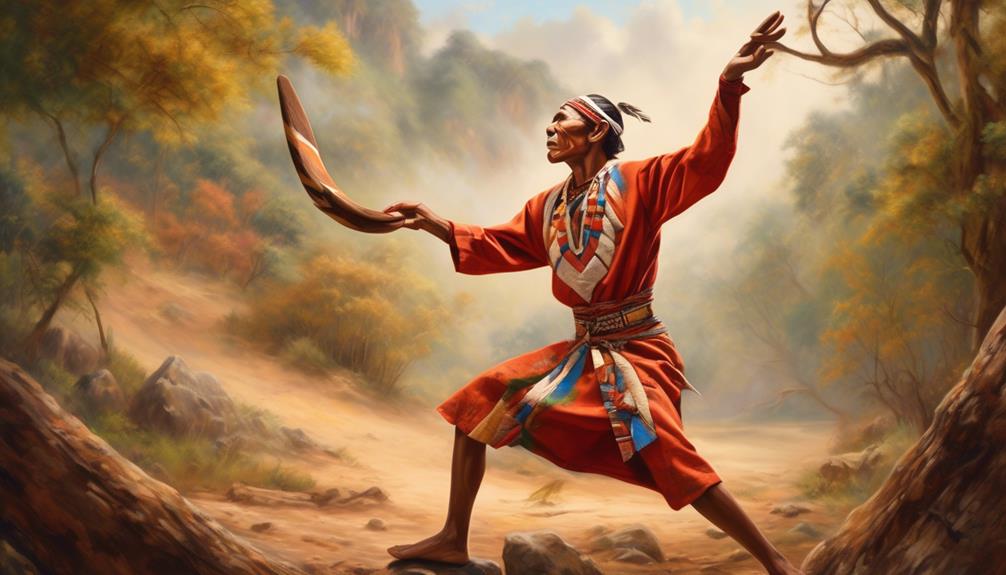
Indigenous cultures around the world have long revered boomerangs as more than just tools, recognizing their deep cultural and spiritual significance. Boomerangs have been woven into the fabric of Indigenous traditions, serving as symbols of connection to the land, ancestors, and the natural world. They hold a special place in ceremonies, dances, and creation stories, embodying the essence of cultural significance and spiritual resonance.
To better understand the cultural importance of boomerangs in Indigenous societies, let's explore how they are integrated into various traditions:
| Indigenous Culture | Boomerang Significance |
|---|---|
| Aboriginal Australian | Used in rituals and as symbols of kinship and survival. Boomerangs are believed to carry spiritual energy. |
| Native American | Boomerangs are seen as representations of the interconnectedness of all living beings and are used in healing ceremonies. |
| African Indigenous | Boomerangs hold symbolic meanings related to hunting, protection, and spiritual power. They are often featured in dances and rituals. |
The reverence for boomerangs in Indigenous cultures goes beyond their physical form and function. They embody a profound connection to heritage, spirituality, and the natural world, making them powerful symbols of cultural resilience and identity. Understanding the cultural significance of boomerangs in Indigenous traditions enriches our appreciation for these ancient implements and the wisdom of the cultures that have revered them for generations.
Boomerang Controversies

Boomerangs have sparked heated debates, particularly regarding cultural appropriation and the modern recreational use of these traditional objects. The controversy surrounding boomerangs delves into questions of respect, ownership, and the preservation of Indigenous cultures.
As we explore this topic, we'll analyze the cultural significance of boomerangs and the ethical considerations of their widespread commercialization and adaptation into non-Indigenous contexts.
Cultural Appropriation Debate
Amidst the ongoing discourse surrounding cultural appropriation, the controversies surrounding boomerangs have sparked intense debates and reflections on the complexities of cultural exchange and ownership. Boomerangs, with their deep cultural significance to Indigenous Australian communities, have become a focal point in the appropriation debate, raising crucial questions about respect, understanding, and acknowledgment of traditional knowledge.
- The historical exploitation of Indigenous knowledge for commercial gain
- The need for meaningful collaboration and consent in cultural representation
- The impact of cultural appropriation on Indigenous communities' autonomy and identity
- The role of education and awareness in addressing cultural appropriation
- The importance of amplifying Indigenous voices and perspectives in discussions on cultural appropriation
These debates compel us to confront the power dynamics inherent in cultural exchange and advocate for respectful and equitable engagement with Indigenous cultures.
Modern Recreational Use
Surrounded by controversy and diverse opinions, the modern recreational use of these curved wooden objects has sparked intriguing debates and reflections. Boomerang enthusiasts are passionate about proper boomerang etiquette and safety. Understanding the importance of respecting others' space and ensuring safety measures are in place is essential for a harmonious boomerang throwing experience.
| Boomerang Etiquette | Safety Tips |
|---|---|
| Respect personal space during throwing | Always ensure a clear throwing path |
| Communicate with others in the area | Use boomerangs in open, unobstructed areas |
| Avoid throwing in crowded places | Be mindful of wind direction and speed |
| Retrieve the boomerang promptly | Use appropriate protective gear |
Individuals engaging in boomerang throwing also seek to perfect their techniques, constantly sharing boomerang throwing techniques and tips. The art of throwing a boomerang involves mastering the right grip, stance, and release to achieve the perfect return flight. This pursuit of mastery adds a layer of cultural richness to the modern recreational use of boomerangs.
Frequently Asked Questions
Are Boomerangs Only Used by Indigenous Cultures, or Are They Used in Other Parts of the World as Well?
Boomerangs aren't only used by indigenous cultures, but also in other parts of the world. Different designs reflect their cultural significance and are used in competitive sports.
Boomerangs have a rich history and are embraced by diverse communities. They hold cultural and spiritual importance beyond their functionality.
Their usage transcends geographical boundaries, showcasing the universal appeal and adaptability of this ancient tool.
Can Boomerangs Be Customized or Personalized for Individual Users?
Yes, boomerangs can be customized and personalized for individual users.
Customizing boomerangs allows for personalized designs to reflect cultural identity or individual preferences.
Traditional craftsmanship techniques can be combined with modern materials to create unique and functional boomerangs tailored to specific users.
This customization adds a personal touch and enhances the cultural significance of the boomerang as a meaningful and individualized tool.
What Are Some Common Misconceptions About Boomerangs?
Common misconceptions about boomerangs often stem from their portrayal in movies and popular culture. Many people believe that boomerangs always return when thrown, but in reality, not all boomerangs are designed for this.
Additionally, there's a misconception that boomerangs were solely used by Indigenous Australians, but they've cultural significance in other parts of the world too.
Understanding boomerang mechanics and aerodynamic design can help dispel these myths and appreciate their diverse cultural significance.
Are There Any Safety Concerns Associated With Using Boomerangs?
Yes, there are safety concerns associated with using boomerangs.
Boomerang construction and design play a crucial role in ensuring safe usage.
Understanding the aerodynamics and proper throwing techniques helps mitigate potential risks.
Safety precautions, such as wearing protective gear and choosing open spaces for boomerang activities, are essential.
Are There Any Environmental Considerations Related to the Production and Use of Boomerangs?
When it comes to boomerangs, it's important to consider the environmental impact and material sourcing.
The production and use of boomerangs can have implications for the environment, from the materials used to the manufacturing process.
It's crucial to be mindful of the materials' origins and the overall impact on the environment.
Understanding and addressing these considerations can help ensure that boomerangs are produced and used in a sustainable and responsible manner.
Conclusion
In conclusion, boomerangs are like a fascinating puzzle that connects us to ancient cultures and modern entertainment. They come in various shapes and materials, each with its own unique uses and traditions.
Boomerangs have a rich history and continue to hold a special place in many indigenous cultures. Despite controversies, they remain a symbol of ingenuity and skill, representing the enduring legacy of their timeless design and cultural significance.
Nayeli is our dedicated Editor in Chief, bringing her passion for words and keen editorial eye to every piece of content we produce. With years of experience in the field, she ensures that every article and publication meets the highest standards of quality and clarity. Nayeli’s commitment to storytelling and her deep understanding of our mission make her an invaluable leader in our team.

